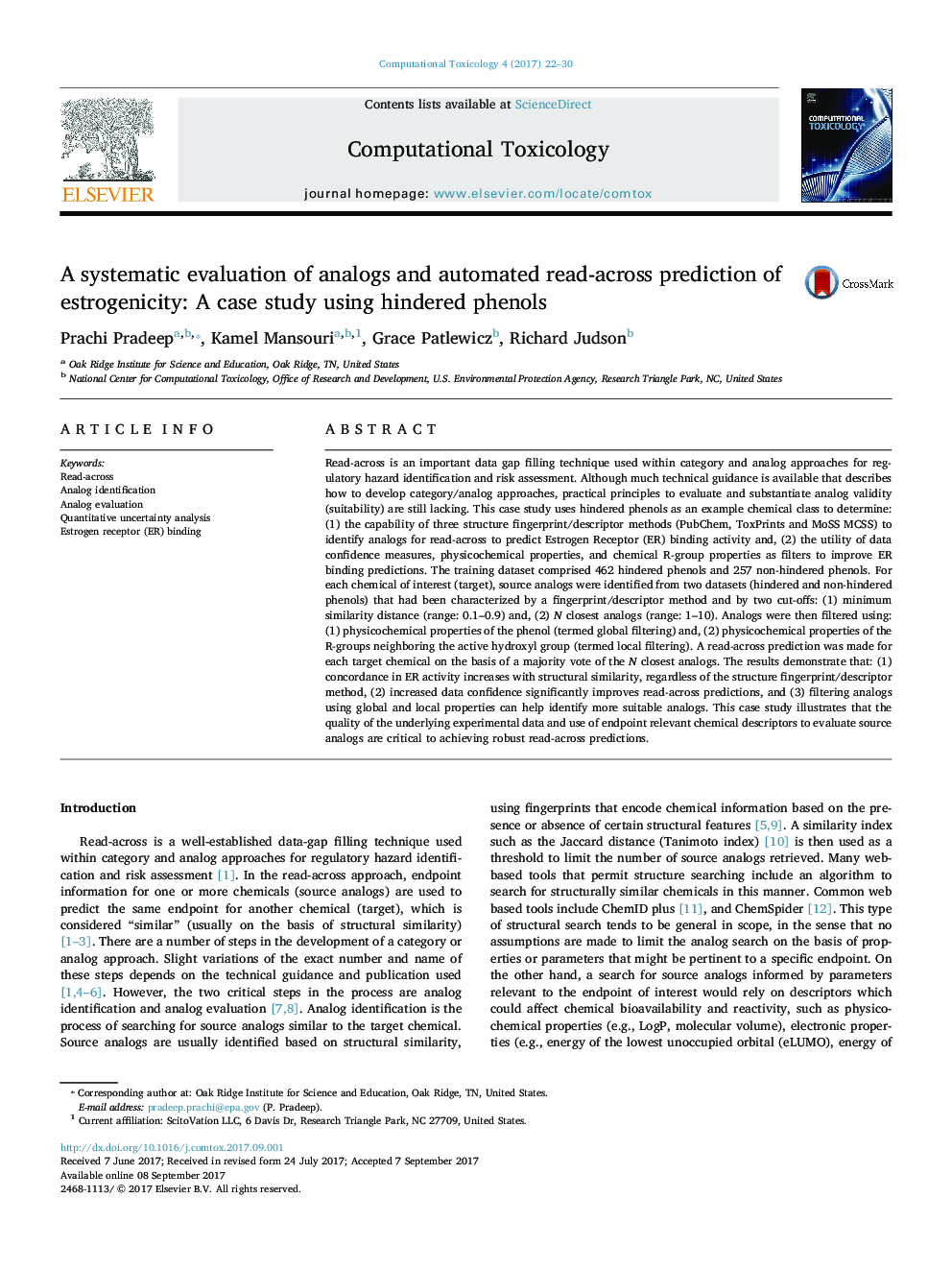| کد مقاله | کد نشریه | سال انتشار | مقاله انگلیسی | نسخه تمام متن |
|---|---|---|---|---|
| 5517322 | 1543162 | 2017 | 9 صفحه PDF | دانلود رایگان |
- A systematic evaluation of source analogs for read-across prediction of Estrogen Receptor binding for hindered phenols.
- Comparison of three structure descriptor methods in their ability to identify suitable source analogs for hindered phenols.
- Evaluation of the impact of data confidence, physicochemical properties, and R-group properties on read-across predictions.
Read-across is an important data gap filling technique used within category and analog approaches for regulatory hazard identification and risk assessment. Although much technical guidance is available that describes how to develop category/analog approaches, practical principles to evaluate and substantiate analog validity (suitability) are still lacking. This case study uses hindered phenols as an example chemical class to determine: (1) the capability of three structure fingerprint/descriptor methods (PubChem, ToxPrints and MoSS MCSS) to identify analogs for read-across to predict Estrogen Receptor (ER) binding activity and, (2) the utility of data confidence measures, physicochemical properties, and chemical R-group properties as filters to improve ER binding predictions. The training dataset comprised 462 hindered phenols and 257 non-hindered phenols. For each chemical of interest (target), source analogs were identified from two datasets (hindered and non-hindered phenols) that had been characterized by a fingerprint/descriptor method and by two cut-offs: (1) minimum similarity distance (range: 0.1-0.9) and, (2) N closest analogs (range: 1-10). Analogs were then filtered using: (1) physicochemical properties of the phenol (termed global filtering) and, (2) physicochemical properties of the R-groups neighboring the active hydroxyl group (termed local filtering). A read-across prediction was made for each target chemical on the basis of a majority vote of the N closest analogs. The results demonstrate that: (1) concordance in ER activity increases with structural similarity, regardless of the structure fingerprint/descriptor method, (2) increased data confidence significantly improves read-across predictions, and (3) filtering analogs using global and local properties can help identify more suitable analogs. This case study illustrates that the quality of the underlying experimental data and use of endpoint relevant chemical descriptors to evaluate source analogs are critical to achieving robust read-across predictions.
Journal: Computational Toxicology - Volume 4, November 2017, Pages 22-30
